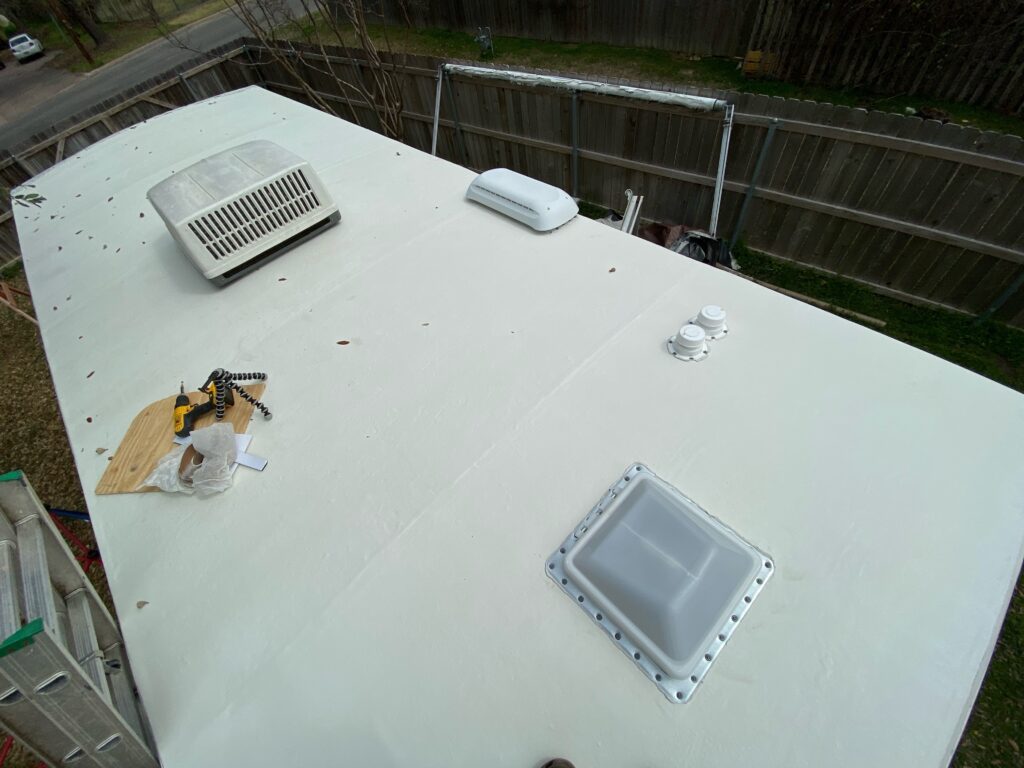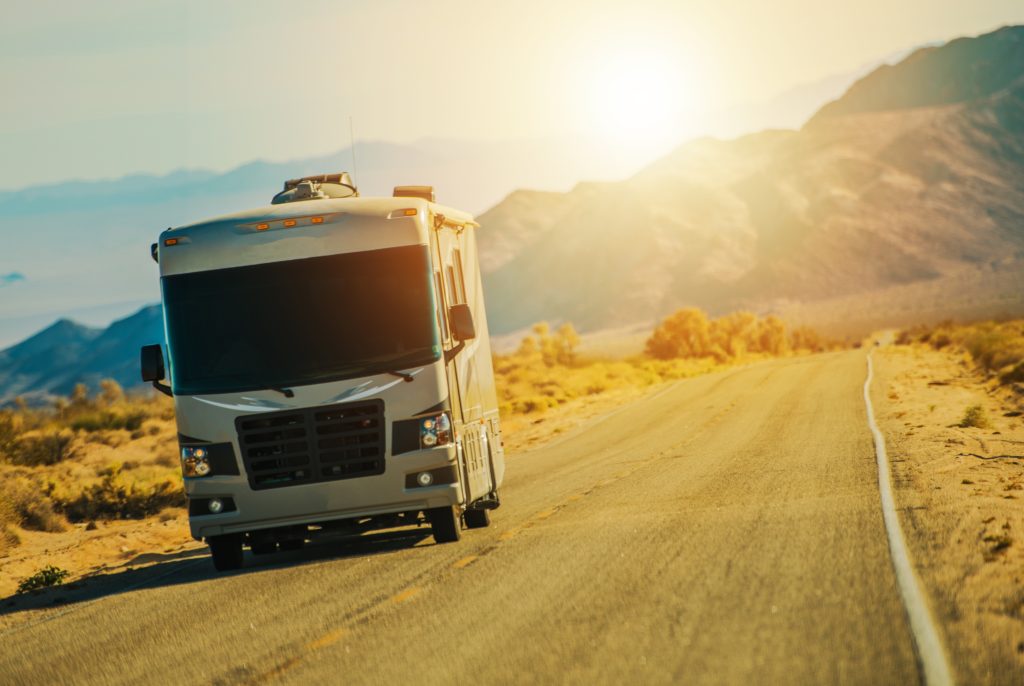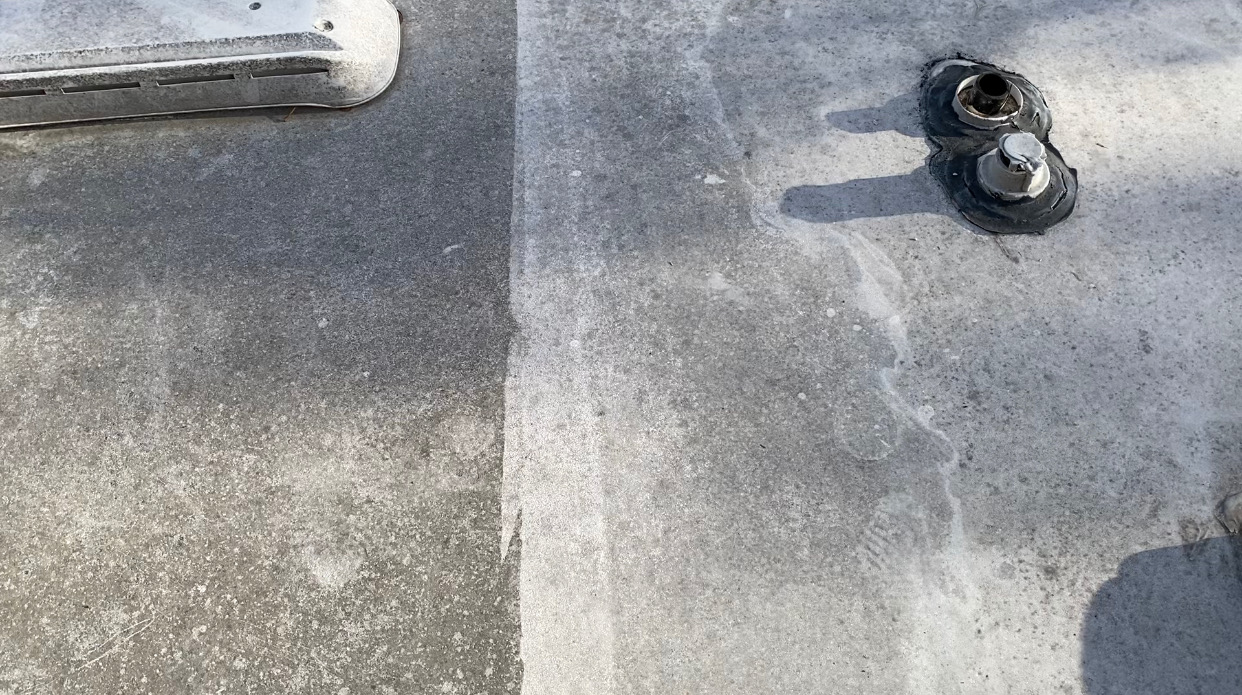There are multiple reasons why this might be the case, depending on what kind of roof you have.
If you have an RV with a rubber roof, your roof may become sticky due to the rubber breakdown that happens with exposure to high temperatures and UV radiation. If not, your roof may be sticky due to the collection of tree sap, which can be easily cleaned away with the right cleaning chemicals.
This article will help you identify which kind of roof your RV has and provide some reasons why your roof might be sticky along with cleaning solutions.
Knowing Your Roof
There are four main kinds of RV roofs, and the reason your RV roof is sticky may be different depending on what kind of material your roof is made of.
Before troubleshooting why your roof is sticky, figure out which kind of roof you have based on the following descriptions.
The Rubber EPDM Roof

A rubber EPDM roof, or ethylene propylene diene monomer roof, is a kind of rubber made for flat roofs.
These are usually the least expensive option and are lightweight without the risk of denting or scratching.
These occasionally require maintenance, like the application of latex tape or rubber shingles, or a liquid roof membrane.
These roofs puncture easily without protectants and absorb heat quickly, and they have an appearance like an intertube.
RV models with an EPDM roof include the 2014 Winnebago Ultralite 28DDBH Bunk House.
The Rubber TPO Roof
The rubber TPO roof is made from polypropylene and ethylene-propylene and is white to reflect heat. It is often glued on with adhesives but can also be welded to the roof.
These vary in quality and thickness between manufacturers, and in all cases, require a laminate cover to avoid cracks and leaks.
RV models with a rubber TPO roof include the 2019 Flair 29M and the 2019 Winnebago RV Micro Minnie 1700BH.
The Fiberglass Roof
Fiberglass roofs are made from plastic reinforced with glass and resin and come in individual sheets and large panels.
These are very durable and unlikely to crack, resistant to rust, rot, and fire, and are very lightweight. They come in many colors.
These roofs are expensive to repair and gather heat quickly.
Models with a fiberglass roof include the 2019 Venture RV Sonic Ultra-Lite Travel Trailer and the Minnie Winnie Class C Motor Home.
The Aluminum Roof
Aluminum roofs are silver-white and metallic and are very durable over time. They resist piercing from tree limbs and are unlikely to produce holes. They are also resistant to fire.
However, these roofs heat up quickly and do not work well with glues, and leaks can hide underneath the aluminum sheets.
These roofs are now less common, but models with aluminum roofing can be found at LazeDaze RVs.
There are several reasons why your RV roof might be sticky, depending on where you’re parked, what kind of roof you have, and what your roof may have been treated with.
The Rubber Is Breaking Down

If you have a rubber roof, whether EPDM or TPO, your roof may become sticky due to UV radiation or hot temperature exposure.
This causes the rubber to break down into a raw state, the way that the material is before it is vulcanized.
Basically, the strings of molecules break apart into smaller pieces instead of maintaining a sturdier form.
On an RV, this breakdown of materials not only creates stickiness but also leaves the roof vulnerable to water leaks that can, in turn, cause problems with the RV’s electrical system.
This can cause hundreds of dollars worth of damages if not repaired.
Additionally, water leaks from a roof that has broken down can cause mold to form, which creates an odor and can cause allergies and other illnesses.
Tree Sap Collected on the Roof
Collections of sap residue from parking under a tree are common for a sticky roof and can cause dirt and other debris to collect quickly.
Sap can cause the paint to fade away and peel, so removing it is a good way to protect your vehicle’s appearance.
What Should You Do if Your RV Roof Is Sticky?
You can take a few basic steps to reduce the stickiness of your roof and resolve the underlying problems causing the stickiness.
Clean Your Roof With Soap and Water
If you have a rubber roof that has broken down due to exposure to heat or UV radiation, the chances are that a simple clean with soap and water is all that you need.
However, you should note any cracks or leaks caused by the breakdown and be sure to seal them before applying any water to the surface.
Cleaning your RV roof is a fairly simple process.
Still, you need to be sure to follow the appropriate steps to do the best job possible of not only removing sticky grime but also reducing the risk of structural damages.
Because cleaning your roof requires manual labor on top of your vehicle, you should be sure to start with a secure ladder and a spotter to reduce the risk of an accident.
Once you have a stable position atop your vehicle and are sure you’ll be protected in case of a fall, follow the following steps to clean your sticky roof:
- If possible, sweep away or manually remove any large debris stuck to the roof.
- Examine the roof for signs of mold or mildew.
- Check the seams of the roof for breaks or leaks.
- Cover the sides of the vehicle with plastic and rinse the top with water.
- Use a medium bristle brush or a soft bristle brush (for difficult to remove stains and spots).
- Scrub the roof with a mild laundry detergent and water or another high-quality cleaning product listed in your owner’s manual.
- Rinse the roof thoroughly.
Remove Tree Sap With Mineral Spirits or Other Cleaning Products
Tree sap should be cleaned right away because it becomes more difficult to remove once it hardens.
There are several options for safely removing tree sap from an RV, but remember that, in any case, you should avoid scratching the surface or scraping the sap away. This can cause permanent damage.
There are a few really popular commercial options:
No products found.
No products found.
There are also a few DIY solutions you can try as well.
If you have a fiberglass or aluminum roof, use a chemical solution like mineral spirits, tar remover, or isopropyl alcohol to soften the sap so that it will wipe away.
You should apply these chemicals with a clean, soaked microfiber cloth, rubbing gently.
Once the sap is gone, use car shampoo to neutralize the cleaning chemicals and then dry the area.
If you have a rubber roof, consider using a solution of diluted bleach and water, applied after a clean with soap and water.
Be sure to use protective gloves while handling the bleach to avoid breathing in the vapors. You should apply the solution conservatively, not pouring excessive amounts on the roof.
Apply a Roof Treatment
After cleaning your roof, you should consider applying a roof treatment like the Protect All Rubber Roof Treatment, which protects the roof from further sun damage and makes dirt and grime less likely to stick to the roof in the future.
This should be applied immediately after your RV is cleaned and dried for maximum effectiveness.
Conclusion
Your RV may be sticky due to a collection of tree sap or because the rubber roof itself is breaking down.
These issues should be taken care of right away, but either problem is fixable with some basic cleaning and sometimes small repairs if cracks have developed.







